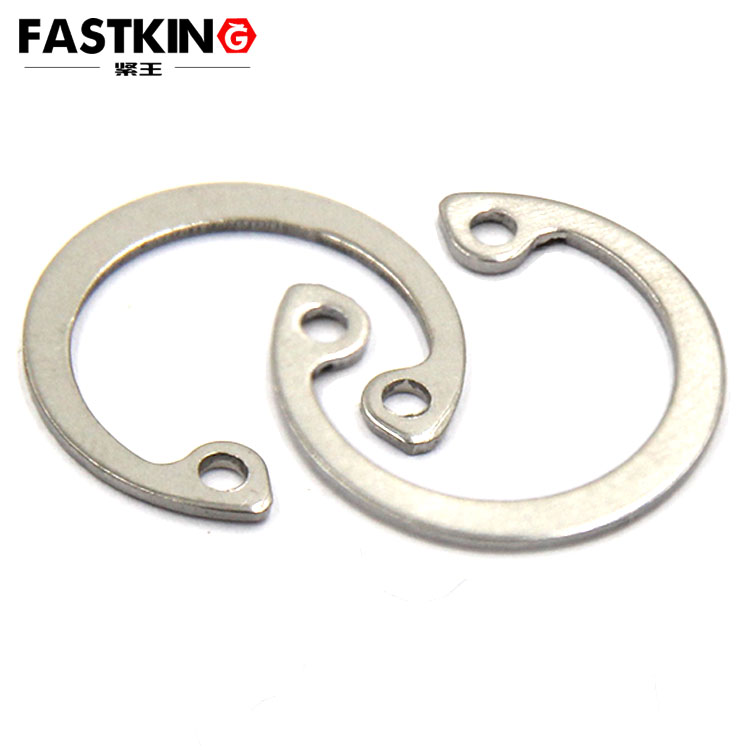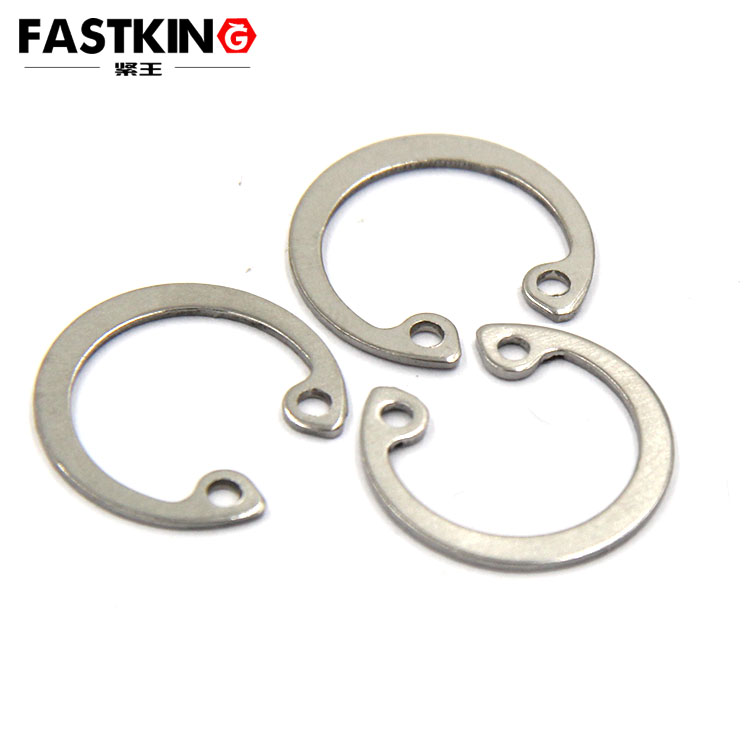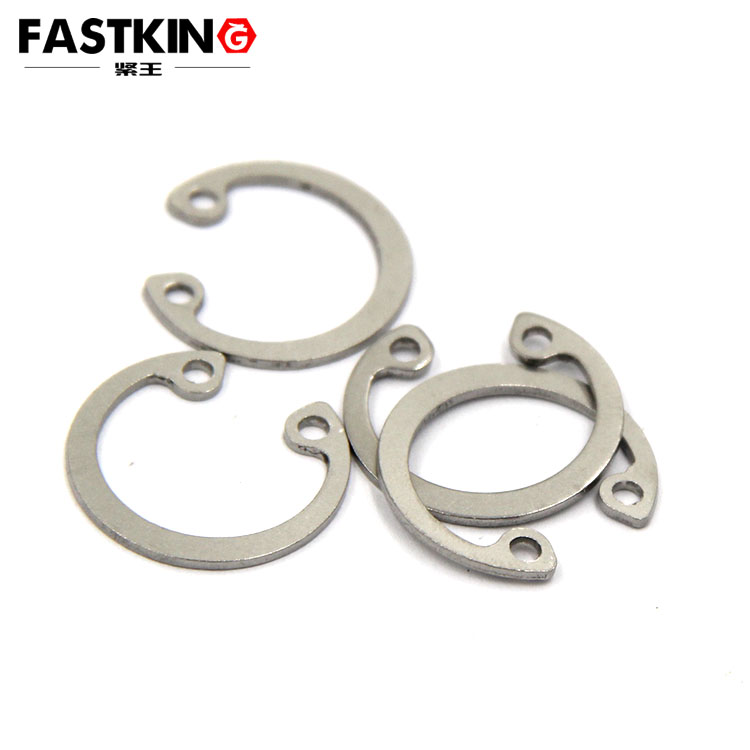The Use and Applications of Hole-Type Elastic Retaining Rings
Hole-type elastic retaining rings are widely used in mechanical engineering and industrial applications as elastic fasteners. They are primarily used to secure and support components, preventing axial or radial movement. Their unique elastic design allows them to maintain stability and reliability in various complex working conditions. This article provides a detailed overview of the structure, usage methods, and applications of hole-type elastic retaining rings.

Structure of Hole-Type Elastic Retaining Rings
Hole-type elastic retaining rings are typically made from high-elasticity steel and have the following main features:
1. Circular Design: The retaining ring is circular and can be installed inside a hole.
2. Elastic Opening: One or both ends of the ring have an opening, facilitating easy installation and removal.
3. High Strength: Made from high-elasticity steel, these rings offer excellent fatigue resistance and wear resistance.
How to Use Hole-Type Elastic Retaining Rings
1. Selecting the Right Retaining Ring
Before using a hole-type elastic retaining ring, choose one that matches the hole diameter and shaft diameter. Common sizes include 10mm, 12mm, 15mm, and 20mm.
2. Preparing Installation Tools
Installing a hole-type elastic retaining ring typically requires the following tools:
Retaining Ring Pliers: Used for installing and removing the retaining ring.
Measuring Tools: Such as calipers, for measuring hole and shaft diameters.
3. Installing the Retaining Ring
Measure Hole and Shaft Diameters: Use calipers to measure the hole and shaft diameters to ensure the retaining ring fits properly.
Use Retaining Ring Pliers: Insert the tip of the pliers into the opening of the retaining ring and gently expand it.
Install the Ring: Place the expanded ring into the hole, ensuring it is fully seated. Release the pliers to allow the ring to snap into place and secure itself within the hole.

4. Checking the Installation
After installation, inspect the retaining ring to ensure it is securely fixed within the hole and that there is no looseness or risk of dislodgement.
Applications of Hole-Type Elastic Retaining Rings
1. Mechanical Equipment
In mechanical applications, hole-type elastic retaining rings are commonly used to secure bearings, gears, and shafts, preventing axial movement. Their high strength and elasticity enable them to withstand high loads and frequent vibrations.
2. Automotive Manufacturing
In the automotive industry, these retaining rings are used to secure engine components, transmission systems, and suspension systems. Their high elasticity and wear resistance make them suitable for withstanding the high intensity and frequent vibrations encountered during vehicle operation.
3. Electronics
In electronic devices, hole-type elastic retaining rings are used to secure circuit boards, casings, and internal components. Their compact size and precise fastening capabilities make them ideal for handling delicate electronic components.
4. Appliance Manufacturing

In home appliance manufacturing, these retaining rings are used to secure the casings and internal structures of washing machines, refrigerators, and air conditioners. Their high elasticity and wear resistance enable them to withstand the high intensity and frequent vibrations during appliance operation.
5. Aerospace
In aerospace applications, hole-type elastic retaining rings are used to secure engine components, transmission systems, and suspension systems. Their high strength and fatigue resistance make them suitable for withstanding the high intensity and frequent vibrations encountered in aerospace operations.
Precautions for Using Hole-Type Elastic Retaining Rings
1. Select the Right Size: Choose a retaining ring that matches the hole and shaft diameters to prevent looseness or dislodgement.
2. Avoid Over-Expansion: When installing, avoid over-expanding the ring, which could damage the ring or compromise its elasticity.
3. Regular Inspection: Periodically check the fastening effect of the retaining ring and replace any loose or damaged rings to ensure the safety and stability of the equipment.
4. Storage Conditions: Store retaining rings in a dry, corrosion-free environment to prevent rust and damage.
Conclusion
Hole-type elastic retaining rings are versatile and efficient mechanical components, widely used in mechanical equipment, automotive manufacturing, electronics, home appliances, and aerospace. Proper selection, installation, and maintenance of these retaining rings can significantly enhance the safety and stability of equipment. This article aims to provide readers with a comprehensive understanding of hole-type elastic retaining rings and how to use them effectively.
